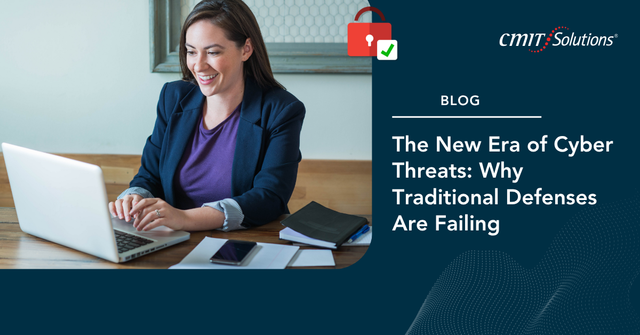In a world where cyberattacks evolve daily, traditional defenses like firewalls and basic antivirus solutions are no longer sufficient to protect businesses. The rise in ransomware, phishing, and AI-driven attacks has exposed vulnerabilities that older cybersecurity strategies simply cannot withstand. For small and medium-sized businesses in Bothell and Renton, understanding these shifts is vital to staying secure.
The Limitations of Traditional Cybersecurity
Many companies still rely on legacy tools designed for an earlier era of computing. Firewalls, signature-based antivirus, and password-only access points were once enough, but modern threats now bypass these measures easily. As described in our insights on multi-layered security that works, businesses need integrated and layered cybersecurity systems.
The Rise of Sophisticated Threats
Today’s threats are often powered by artificial intelligence and are capable of learning and adapting. Phishing emails can mimic the language and tone of known contacts, increasing their chances of success. Our blog on securing business emails provides actionable guidance for business owners.
In addition, endpoint detection and response (EDR) is crucial in combating fileless malware and advanced persistent threats, which evade conventional antivirus solutions.
Why a Proactive Approach Is Essential
Traditional defenses operate on a reactive model—they wait for something to go wrong. In contrast, the managed services model ensures 24/7 monitoring and prompt threat response.
Equally important is having a well-defined disaster recovery plan to recover operations in the wake of an attack or system failure.
Email Security and Unified Communications
Email is often a primary target for cybercriminals. Our strategy for blocking modern email threats includes spam filtering, malware scanning, and encryption.
To further enhance collaboration and security, unified communication strategies can integrate secure tools that align with modern workflows.
SIEM and Advanced Monitoring
SIEM tools like Microsoft Sentinel offer real-time threat detection and actionable analytics. These tools provide deep insights into potential vulnerabilities.
Additionally, Microsoft Intune MDM helps protect mobile and remote workforces with centralized control.
Compliance in the Modern Age
Industries such as healthcare and finance require compliance with strict standards like HIPAA and PCI. For a comprehensive look at these issues, see our article on HIPAA, PCI, and beyond.
Automated tools help streamline these processes, as explored in our guide on automating compliance in the age of AI.
Cloud Security and Hybrid Models
The move to cloud platforms has accelerated, but balancing flexibility and control is key. A cloud-first, not cloud-only strategy allows businesses to maintain certain on-premises assets.
Our managed cloud services ensure scalability, security, and seamless performance across environments.
Zero Trust: The New Standard
Adopting a Zero Trust framework means never assuming trust. Instead, verification is continuous and privileges are tightly controlled.
This method drastically reduces internal and external risks, and it is fast becoming the industry standard for small business cybersecurity.
Backup and Business Continuity
Ransomware tactics now target backups themselves. Our strategy for updating your backup defenses ensures redundancy, encryption, and isolation.
Also, a focus on disaster recovery and continuity is vital to maintaining operations during crises.
Beyond Tools and Future-Proofing: The Role of IT Partners and AI
Technology alone isn’t enough. Businesses need trusted advisors to manage evolving threats, especially as the cybersecurity landscape grows more complex. If you’re evaluating providers, our resource on what to know before choosing an MSP will guide your decision.
Partnering with proactive IT providers leads to better long-term outcomes, particularly in fast-evolving industries. But technology partnerships shouldn’t stop there. Artificial intelligence, once a tool of cybercriminals, is now a powerful defensive asset.
Businesses can learn how to leverage AI-driven insights by reviewing our Microsoft Ignite recap. These insights not only help in detecting anomalies but also in predicting vulnerabilities before they can be exploited.
Furthermore, AI-powered workplace tools can streamline everyday operations, enhance productivity, and support smarter decision-making. Combining human expertise with AI creates a more adaptive and resilient IT posture for modern businesses.
Unified Communications and Remote Collaboration
Collaboration tools must be secure and efficient. Our overview on streamlining collaboration explains how cloud platforms support hybrid workforces.
These systems reduce downtime, increase transparency, and enhance teamwork across locations.
Conclusion: The Path Forward
Cybersecurity today requires a holistic, proactive, and flexible approach. Traditional defenses are no longer up to the task. By embracing layered security, endpoint protection, SIEM systems, unified communications, and trusted managed services, businesses in Bothell and Renton can thrive securely in this new era of threats.
Explore how your organization can get ahead of modern threats with scalable, customized solutions designed for your industry and risk profile. Cyber resilience isn’t just an option anymore—it’s a necessity.







